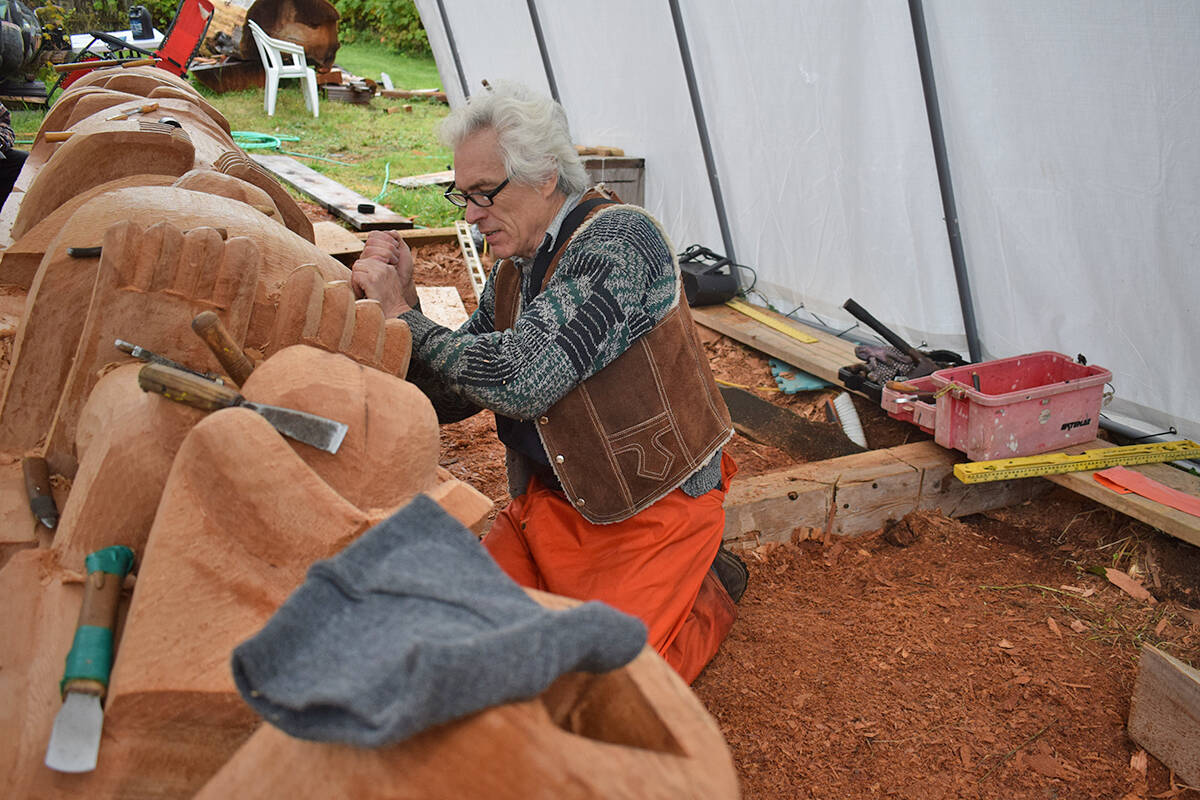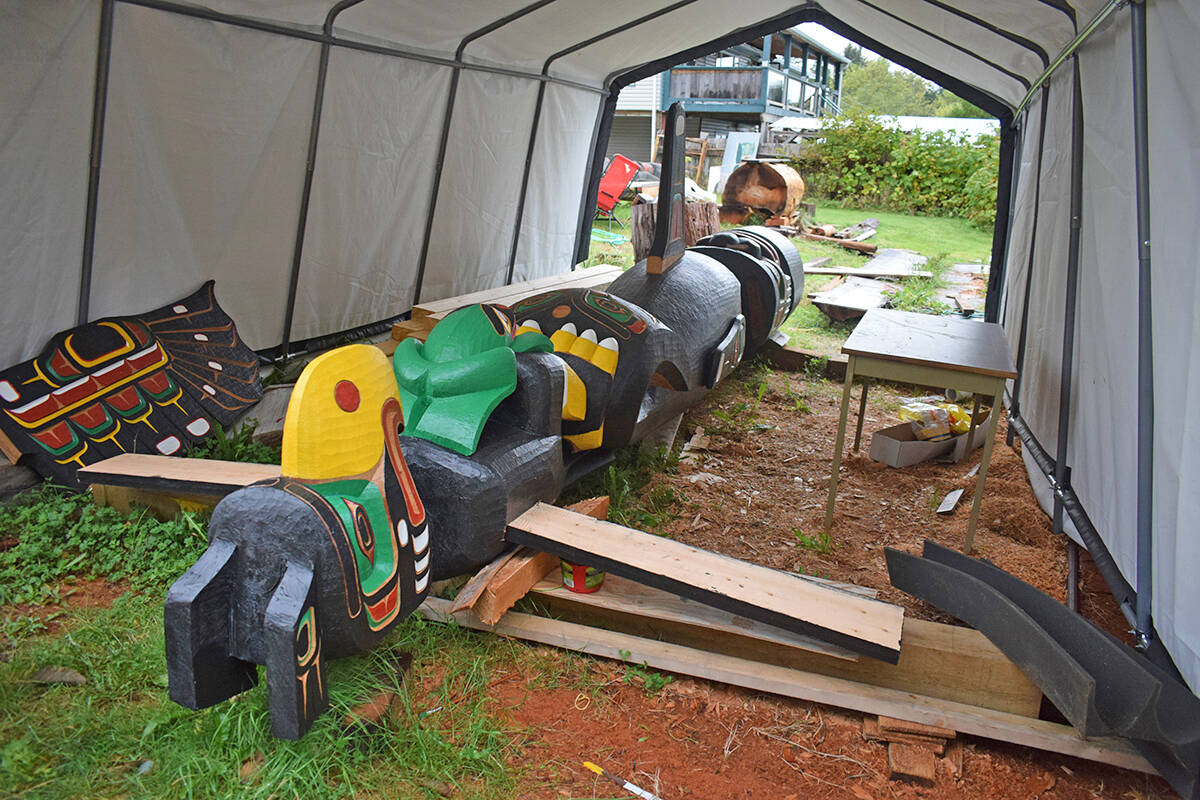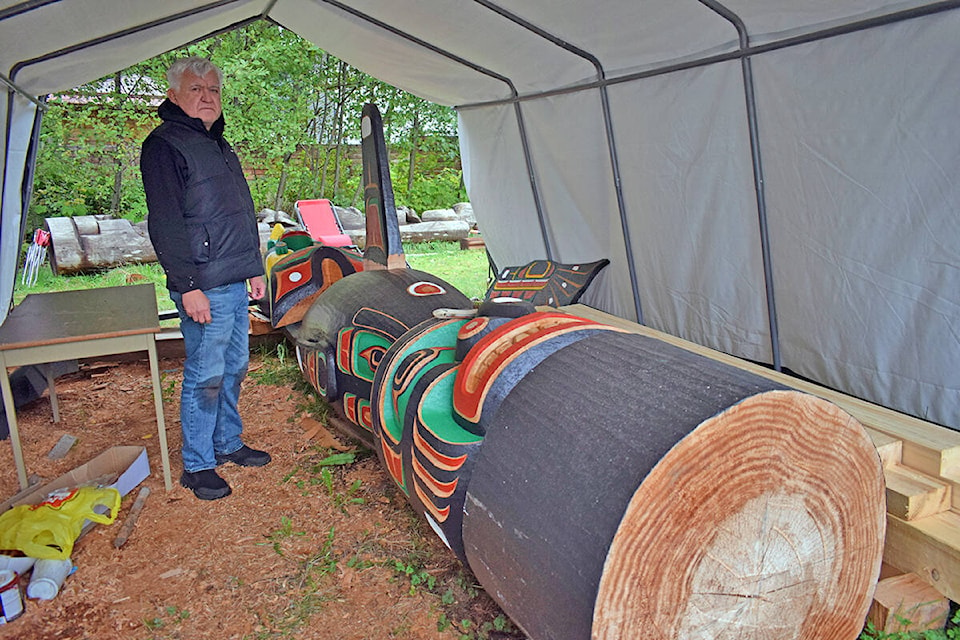Kwakiutl artist Stan Hunt has been busy carving two 17-foot totem poles for the coast guard’s new logistics depot building across the bay in Port Hardy.
Hunt isn’t carving the poles all by himself though, he’s working side by side with two other local Indigenous carvers, Mervyn Child and Rey Dickie.
“Just about every totem pole I’ve ever done here I’ve had Mervyn with me, and I wanted to make sure we had a young and involved artist as well, and that’s Rey,” he said. “He’s always wanted to do this and he’s putting in a lot of effort and a lot of time.”
When asked to comment, Child said he first started carving when he was 15-years-old with renowned Kwakiutl artist Calvin Hunt, and that he became involved in carving these two totem poles when “Uncle Stan” hired him to come in and assist him.
“It’s rewarding, and it’s also challenging because his sculptural technique is so different from working with Calvin for so many years and doing my own thing,” Child said, “but the end result speaks for itself.”
As for Hunt, he noted he’s been fascinated by the art of carving ever since he first started when he was 20-years-old.
“I started carving with my dad in Thunderbird Park in Victoria, I didn’t know a thing about it, but I helped him with five totem poles,” he said, pointing out that his father, Henry Hunt Sr., and his brother, Tony Hunt Sr., were his two main influences early on in a career that’s now spanned 47 years.
In fact, you can trace Hunt’s carving lineage all the way back to the legendary Kwakwaka’wakw artist Mungo Martin. Hunt noted his mother had actually been adopted by Martin in a Big House ceremony.
When asked how many totem poles he estimates he’s carved over the years, Hunt laughed and said “that’s a really good question, we were actually trying to figure that out awhile ago.”
He knew for sure though that it was only 10 years ago when he had carved the biggest totem pole of his entire career, which came in at a massive 42-feet, 10 inches.
The pole currently resides in Buenos Aires, Argentina at the Plaza Canada. Other works of art he’s created over the years can be found all over the world, including even at a castle in Scotland.
Hunt was also the lead for all of the Indigenous artwork that has been created for the new Port Hardy Airport. “We wanted the airport to have museum quality pieces, and I think that happened,” he said, stating the airport and the coast guard both reached out to him as a way to represent the Kwakiutl First Nation traditional territory, adding that totem poles are “monuments of our people and where we come from.”
Hunt and his two-man crew started carving the poles in January and have been etching away at the logs ever since.
Both logs actually came from the dryland sort in Port McNeill.
“I like those guys, I want them mentioned,” he said, before telling a story about how one of the two poles was made from the very first log he went down there to look at.
As for the actual designs being carved, he said he wanted both poles to be all about the ocean as a way to represent the coast guard.
The one currently being carved has a sea raven on the top with a frog coming off its chest onto its knees, the middle has a sea bear biting into a halibut, and the base has a sisuytl (doubleheaded sea serpent), with one head going all the way up the back of the pole.
The one that’s already painted has a sea eagle on the top, a killer whale in the middle, and a sea monster for the base.
Hunt added these designs all go back in time throughout generations of Kwakiutl history.
All told, carving the poles has been “a great experience,” Hunt said, before praising Child and Dickie for all their help. “It’s been a long haul, and they’ve both been so dedicated to this.”
As for whether the rumours are true that these two poles will signify his retirement from the art world, Hunt was quick to say that he’s still going to continue carving, “just maybe not totem poles,” he laughed.
@NIGazette
editor@northislandgazette.com
Like us on Facebook and follow us on Twitter


